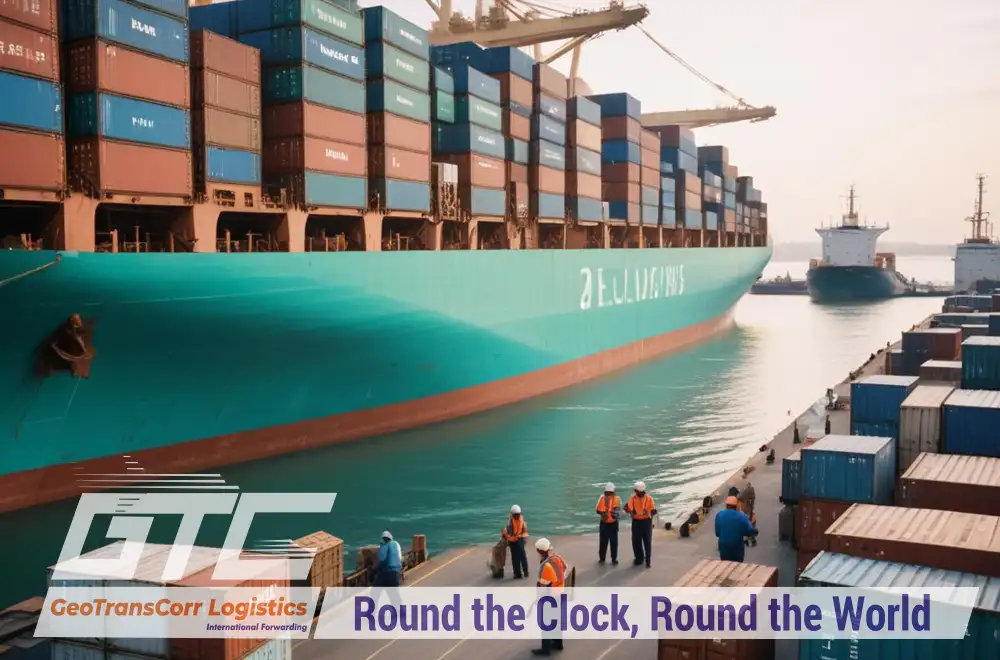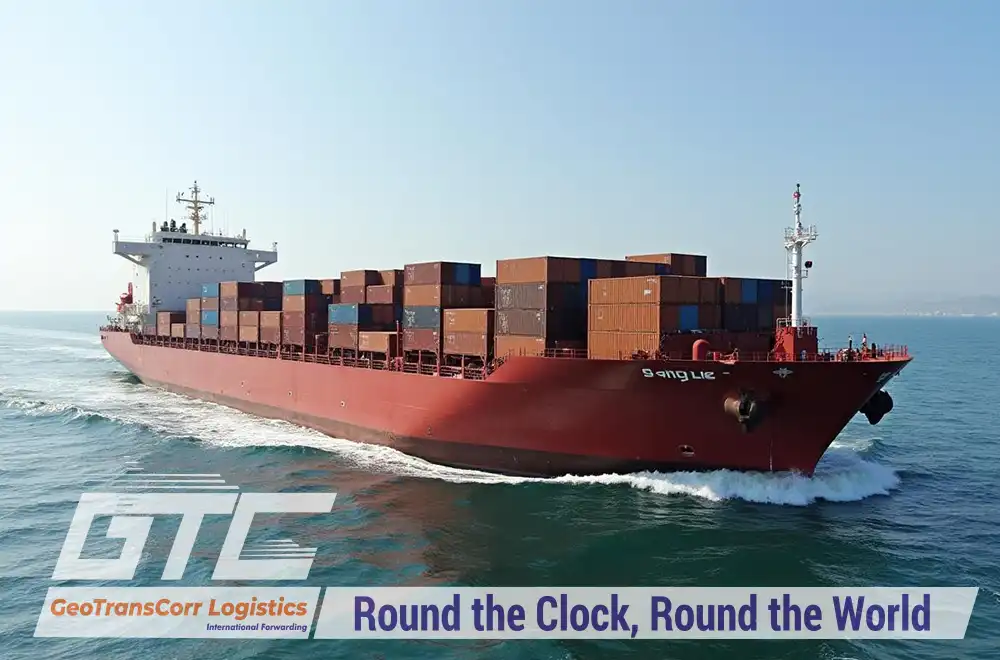Vladivostok, the bustling port city at the edge of Russia’s Far East, plays a pivotal role in global maritime logistics. With its strategic location, advanced infrastructure, and diverse range of shipping services, this vibrant port connects Russia to the Asia-Pacific region and beyond. From container shipping and bulk cargo handling to Ro-Ro services and passenger ferries, Vladivostok’s port is a gateway for international trade and regional mobility. Dive into our comprehensive article to explore how Vladivostok Port operates, its key shipping routes, and what makes it a crucial node in global sea transportation.
Vladivostok’s Importance in Sea Transportation
Vladivostok, located on the southeastern tip of Russia’s Far East, serves as a crucial maritime gateway to the Pacific Ocean. Its strategic position at the head of the Golden Horn Bay provides a deep-water harbor capable of accommodating large vessels, making it an essential hub for international shipping routes connecting Russia with Asia and beyond.
Economic Significance
As the largest port in Russia’s Far East, Vladivostok plays a pivotal role in facilitating trade between Russia and the Asia-Pacific region. The port supports a diverse range of cargo, including container shipments, bulk goods, and automotive transport. Its economic impact extends beyond its immediate region, influencing national trade dynamics and contributing significantly to the local and national economy.
Port Facilities and Infrastructure
Vladivostok’s port is equipped with modern facilities designed to handle various types of cargo efficiently. It features advanced container terminals, bulk cargo handling facilities, and specialized infrastructure for Ro-Ro (roll-on/roll-off) ships. The port’s extensive network of warehousing, loading, and unloading facilities ensures smooth operations and minimizes logistical delays.
Trade Routes and Connectivity
The port is a key node in major maritime trade routes, connecting Russia with major markets in China, Japan, South Korea, and other Asia-Pacific countries. It serves as a transit point for goods moving between Russia and these economies, supporting the flow of raw materials, manufactured goods, and consumer products. Vladivostok’s connectivity to global shipping lanes enhances its role as a critical hub in international supply chains.

Economic and Strategic Role
Vladivostok’s importance extends beyond commercial activities; it also holds strategic significance for Russia. As a major naval base, it provides security and defense capabilities in the Pacific region. The port’s development and modernization efforts reflect its dual role in supporting both economic growth and national security interests.
Types of Sea Transportation in Vladivostok
Vladivostok Port offers a wide range of sea transportation services, each tailored to handle different types of cargo and shipping needs.
Container Shipping
Container shipping is a primary mode of transport at Vladivostok’s port, reflecting its critical role in international trade. The port’s modern container terminals are equipped to handle large volumes of goods efficiently, utilizing advanced cranes and automated systems. Containerized cargo includes a wide range of products, from electronics and machinery to consumer goods and raw materials. The efficiency of container shipping at Vladivostok supports its position as a key gateway for trade between Russia and the Asia-Pacific region.
Bulk Cargo
Vladivostok also serves as a significant hub for bulk cargo, which includes commodities such as coal, grain, oil, and metal ores. The port’s specialized facilities for bulk handling, such as dedicated loading and unloading equipment, allow for the efficient management of these large-volume shipments. Bulk cargo plays a vital role in supporting regional industries and meeting domestic and international demand for these essential resources.
Ro-Ro (Roll-on/Roll-off) Shipping
Ro-Ro (Roll-on/Roll-off) shipping is an important segment of Vladivostok’s maritime operations. This type of shipping involves transporting vehicles and cargo that can be driven on and off the ship. Ro-Ro vessels are used to carry automobiles, trucks, and machinery, providing a convenient and efficient solution for moving large and heavy items. Vladivostok’s facilities are well-equipped to handle Ro-Ro operations, contributing to the port’s versatility and its role in facilitating trade across different sectors.

Passenger Ferries
Passenger ferries are another significant aspect of sea transportation in Vladivostok, connecting the city with various destinations within the Asia-Pacific region. These ferries provide essential links for both tourism and local travel, offering services to destinations such as Japan, South Korea, and other nearby locations. The presence of passenger ferries enhances Vladivostok’s role as a gateway for regional mobility and supports its appeal as a travel and tourism destination.
Major Shipping Routes and Destinations
Vladivostok Port plays a crucial role in international maritime trade with its extensive network of major shipping routes.
Regional Shipping Routes
Vladivostok’s port serves as a central hub in regional shipping networks within the Asia-Pacific region. Key regional shipping routes include:
- East Asia Routes: Regular routes connect Vladivostok with major ports in China, Japan, and South Korea. These routes facilitate the movement of a variety of goods, including manufactured products, electronics, and raw materials.
- Southeast Asia Connections: Shipping routes extend to Southeast Asia, linking Vladivostok with ports in countries such as Vietnam, Thailand, and Malaysia. This connectivity supports trade in agricultural products, consumer goods, and industrial supplies.
- Domestic Routes: Within Russia, Vladivostok is linked to other Russian ports and cities via maritime routes, playing a crucial role in internal distribution and regional trade.
International Shipping Routes
On the international stage, Vladivostok is strategically positioned along key maritime routes that enhance its global connectivity:
- Trans-Siberian Maritime Route: This route connects Vladivostok with Europe through the Trans-Siberian Railway, facilitating a multimodal transportation corridor that supports significant trade volumes between Russia and European markets.
- North Pacific Route: Vladivostok is part of the North Pacific shipping corridor, which links the port with key destinations in North America, including the United States and Canada. This route is essential for the movement of goods between Asia and North America.
- Arctic Routes: Emerging Arctic shipping routes, due to melting ice and new navigable passages, are beginning to influence Vladivostok’s maritime connections. These routes offer shorter paths between Asia and Europe, potentially increasing Vladivostok’s role in Arctic shipping networks.

Key Trade Partners
Vladivostok’s position as a major port city is reinforced by its trade relationships with several key partners:
- China: As one of Vladivostok’s largest trading partners, China is a significant source of imports and a major destination for exports. The port facilitates the flow of goods such as electronics, machinery, and consumer products between the two regions.
- Japan: Japan is another crucial partner, with Vladivostok serving as a key gateway for trade in vehicles, industrial equipment, and other goods. The strong economic ties are supported by regular shipping services and bilateral agreements.
- South Korea: South Korea’s trade with Vladivostok involves a range of products, including petrochemicals, steel, and machinery. The efficient shipping routes contribute to a robust trade relationship between the two regions.
- United States: Through North Pacific routes, Vladivostok maintains trade connections with the United States, focusing on the exchange of goods such as raw materials and manufactured products.
- Regional Partners: Other important trade partners include countries in Southeast Asia, with whom Vladivostok shares shipping routes for various commodities and products.
Detailed Profile of Vladivostok Port
Commercial Port of Vladivostok holding a prominent position in the stevedoring service market. With 15 berths stretching a total length of 3.2 kilometers, the port is equipped with an extensive fleet of 200 cranes and mechanical appliances. It handles an impressive 13.4 million tons of cargo annually, including 5.2 million tons of bulk cargo and oil products. The port processes around 2,000 ships each year, with a throughput of 860,000 TEUs and 200,000 cars. It also manages the handling of 77,000 units of vehicles annually, supported by a skilled workforce of 2,300 specialists.
Vladivostok Port’s commitment to reliability is reflected in its choice of top-tier equipment from leading market brands, which minimizes processing time and prevents emergencies. The port’s equipment fleet is robust, with container terminals featuring 5 STS re-loaders (30.5 t, 60 t), 6 RMG re-loaders (45 t), and 9 RTG re-loaders (45 t). The general-purpose terminal is supported by 4 mobile cranes (63 t, 100 t), 19 gantry cranes, and various auxiliary equipment including 71 forklift trucks, 38 terminal tractors, 18 reach-stackers, 10 bucket loaders, 5 stacker trucks, and 4 manipulators.
The port’s extensive railway infrastructure complements its maritime capabilities, featuring 20 kilometers of rail tracks, 4 receiving-departure tracks, 19 sorting tracks, 6 constantly operating shunting locomotives, 2 trackmobiles, and 6 tracks for receiving passenger trains. This integrated infrastructure ensures efficient cargo handling and transportation, solidifying Vladivostok Port’s critical role in regional and international trade.

Conclusion
Vladivostok stands as a pivotal maritime gateway in the Russian Far East, seamlessly connecting Russia with the Asia-Pacific region and beyond. Its advanced infrastructure supports a diverse range of services, including container shipping, bulk cargo, Ro-Ro operations, and passenger ferries. With ongoing investments in modernization and technology, Vladivostok is set to enhance its capacity and efficiency, solidifying its role as a key player in international trade and regional development. Its strategic importance and robust capabilities make it a cornerstone of global maritime logistics.
At GTC, we specialize in providing seamless freight forwarding solutions across Russia and beyond. Leveraging the strategic advantages of Vladivostok Port, our expert team ensures efficient, reliable, and cost-effective shipping for your cargo worldwide. Whether you’re managing containerized goods, bulk shipments, or specialized cargo, we have the expertise and resources to handle it all. Contact us today to streamline your logistics and tap into the global network through one of the most dynamic ports in the Russian Far East.






